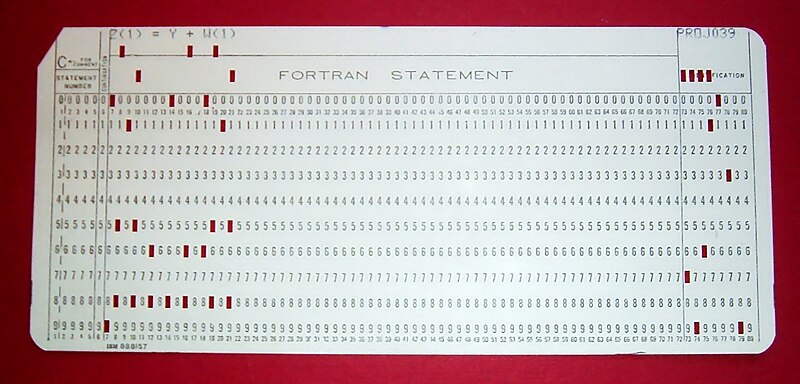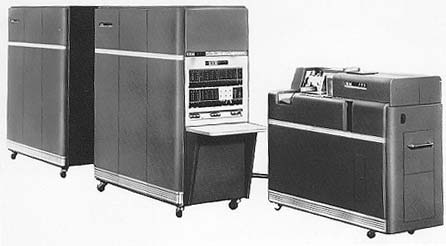
Posted on 03/20/2007 7:10:36 AM PDT by Ernest_at_the_Beach
John W. Backus, who assembled and led the I.B.M. team that created Fortran, the first widely used programming language, which helped open the door to modern computing, died on Saturday at his home in Ashland, Ore. He was 82.

John W. Backus in the late 1990s. Fortran was released in 1957.
His daughter Karen Backus announced the death, saying the family did not know the cause, other than age.
Fortran, released in 1957, was “the turning point” in computer software, much as the microprocessor was a giant step forward in hardware, according to J.A.N. Lee, a leading computer historian.
Fortran changed the terms of communication between humans and computers, moving up a level to a language that was more comprehensible by humans. So Fortran, in computing vernacular, is considered the first successful higher-level language.
Mr. Backus and his youthful team, then all in their 20s and 30s, devised a programming language that resembled a combination of English shorthand and algebra. Fortran, short for Formula Translator, was very similar to the algebraic formulas that scientists and engineers used in their daily work. With some training, they were no longer dependent on a programming priesthood to translate their science and engineering problems into a language a computer would understand.
In an interview several years ago, Ken Thompson, who developed the Unix operating system at Bell Labs in 1969, observed that “95 percent of the people who programmed in the early years would never have done it without Fortran.”
He added: “It was a massive step.”
Fortran was also extremely efficient, running as fast as programs painstakingly hand-coded by the programming elite, who worked in arcane machine languages.
(Excerpt) Read more at nytimes.com ...

I am too young to have had to implement Fortran using punch cards, but Fortran 77 was the second language I learned (learned MATLAB first), and then "moved on" to C++. Now that the newest incarnation of Fortran has interoperability with C and supports OOP, I may go back to it (in a way) to have access to all of the libraries.
RIP John Backus.
I will dim my monitor in his honor.
Former COBOL PL/I and 360 Assembler programmer.
I still use the backs of old "Hollerinth" (punch) cards for notes when I want to scare my co-workers.

The IBM 650 Magnetic Drum Calculator
****************************************EXCERPT****************************************
The 650 was a true general-purpose computer, the natural evolution of the CPC (Card Programmed Calculator) to a stored-program computer with a full set of decimal arithmetic, logical, and control instructions, plus (later) the ability to handle alphabetic data. It was initially programmed in machine language, then in SOAP (Symbolic Optimal Assembly Program), its native optimizing assembler (if "optimizing assembler" strikes you as an oxymoron, keep reading). SOAP was written in 1955 at Watson Lab by Stan Poley [65]; it was not the first assembler, but it was close (credit for that usually goes to Nat Rochester's assembler for the IBM 701 in 1954).
By 1957 a FORTRAN compiler (FORTRANSIT) was available (which compiled FORTRAN into SOAP; a native FORTRAN compiler appeared in 1959). (You will recall that FORTRAN itself was the child of Columbia University and Watson Lab alumnus John Backus.)
Where the heck do you get them? Or, have you carefully preserved a stash all these years?
I loved them for note taking. They were a convenient size, easy to carry around, made great book marks, etc. They also didn't curl, unlike lots of index cards one gets today.
Punch cards fit nicely in my suit vest pockets....I had a good supply when I retired but have run out of them.....
Do stand in the "dolt" corner then....
ping
ROFL...Avirtual paging nightmare.....LOL!

Excuse me I have to down to the center to see if my batch ran this time then put my 2000 fan fold pages through the burster.
I had a flashback to some excruciatingly long COBOL programs when I read your DO LOOP quip. Aack. Never did program in FORTRAN, did alot of COBOL.
I too long ago took a course in Basic and disliked it for the disconnect between the code and what it was doing. Then I took a course in Fortran and liked it for its making me know what the code was doing.
Thank You....
I had a small, dwindling supply. Just a handful left now.
They'll go the way of all the reel-to-reel back-ups we have with no reel-to-reel tape reader!
My first IT job was actually typing in cobol pgms from cards into CICS/ICCF files. When I think back on it, I can't figure out why we couldn't import them from the cards??? Maybe it was just JCL?? Can't remember now....mind going....
I had a pair of gerbils when I was in college. I threw my used punch cards in their tank for them to use as bedding. They could turn dozens of cards to fluff in no time! (Also toilet paper and paper towel rolls, which the played in first then gnawed up.).
I remember students asking if it was alright to punch their COBOL pgms on the PL/I cards (we tried to keep them color coded).
Disclaimer: Opinions posted on Free Republic are those of the individual posters and do not necessarily represent the opinion of Free Republic or its management. All materials posted herein are protected by copyright law and the exemption for fair use of copyrighted works.